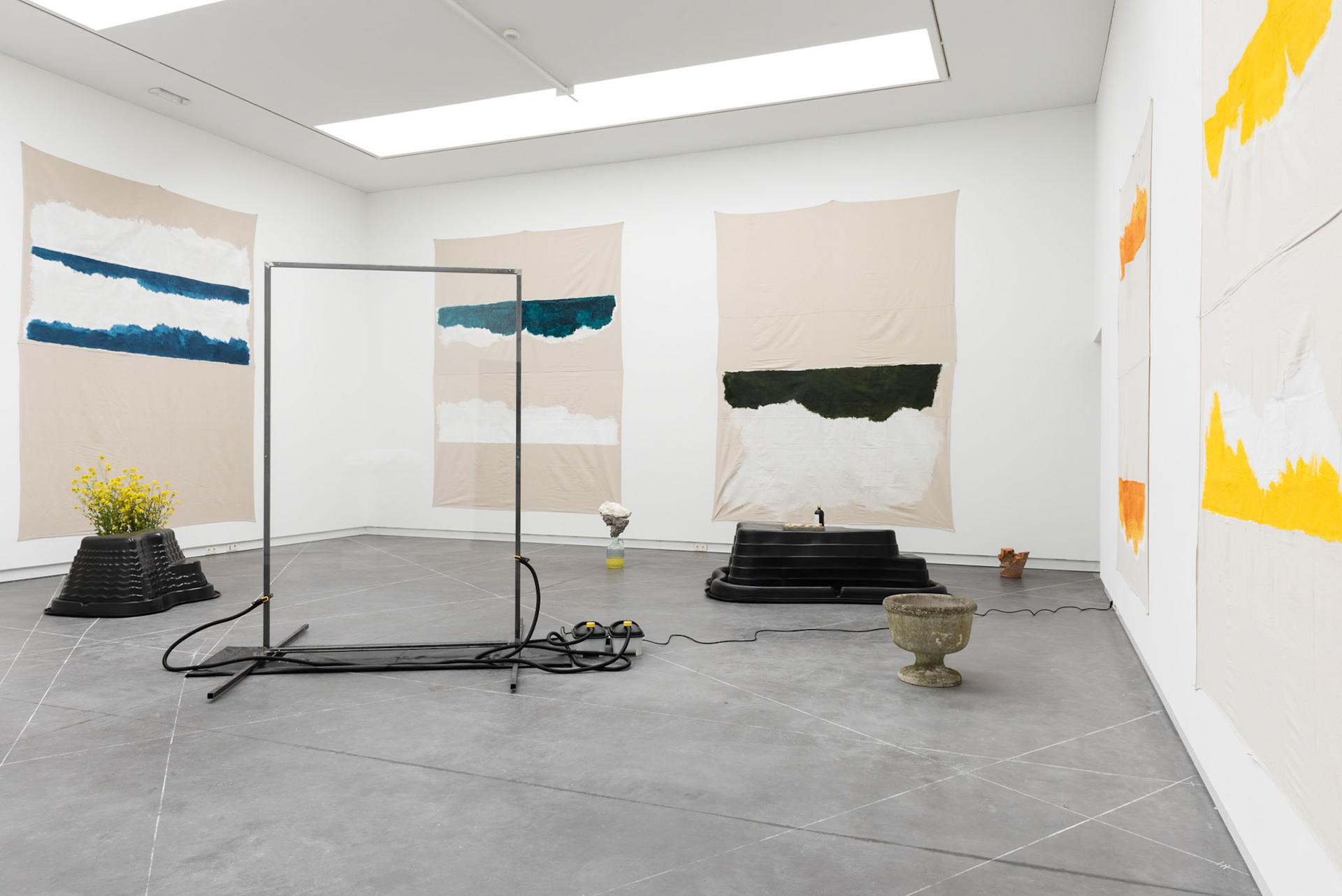

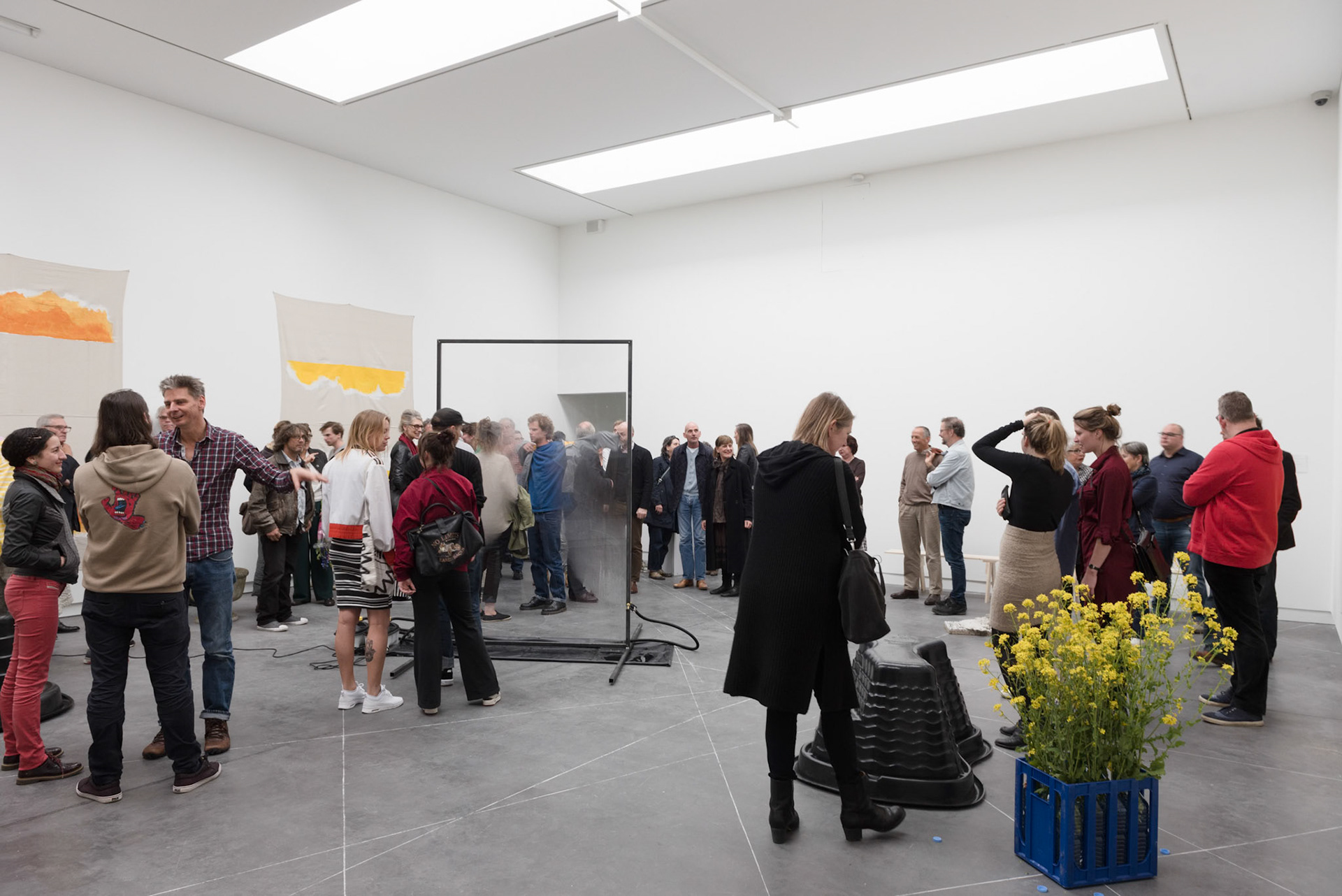
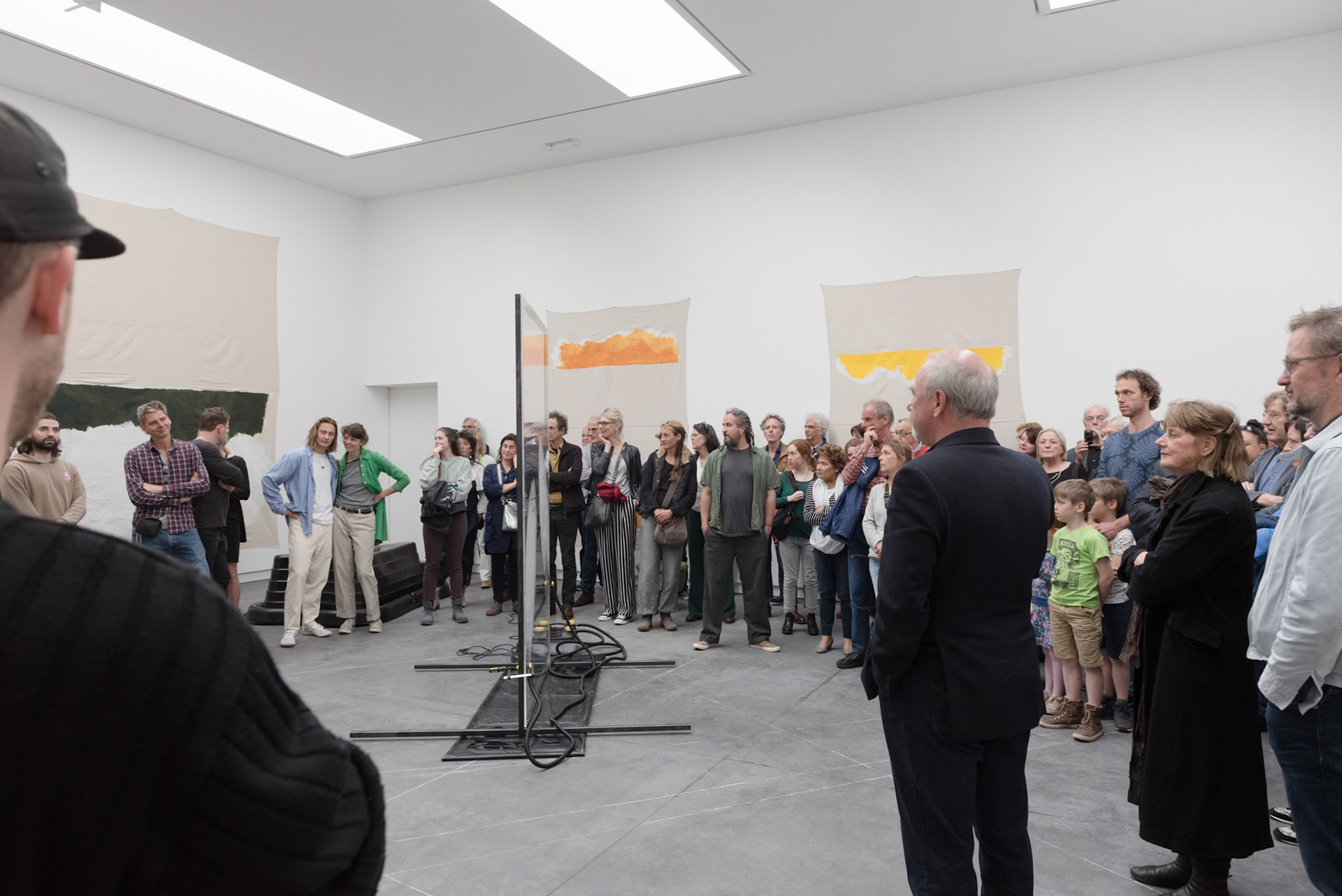
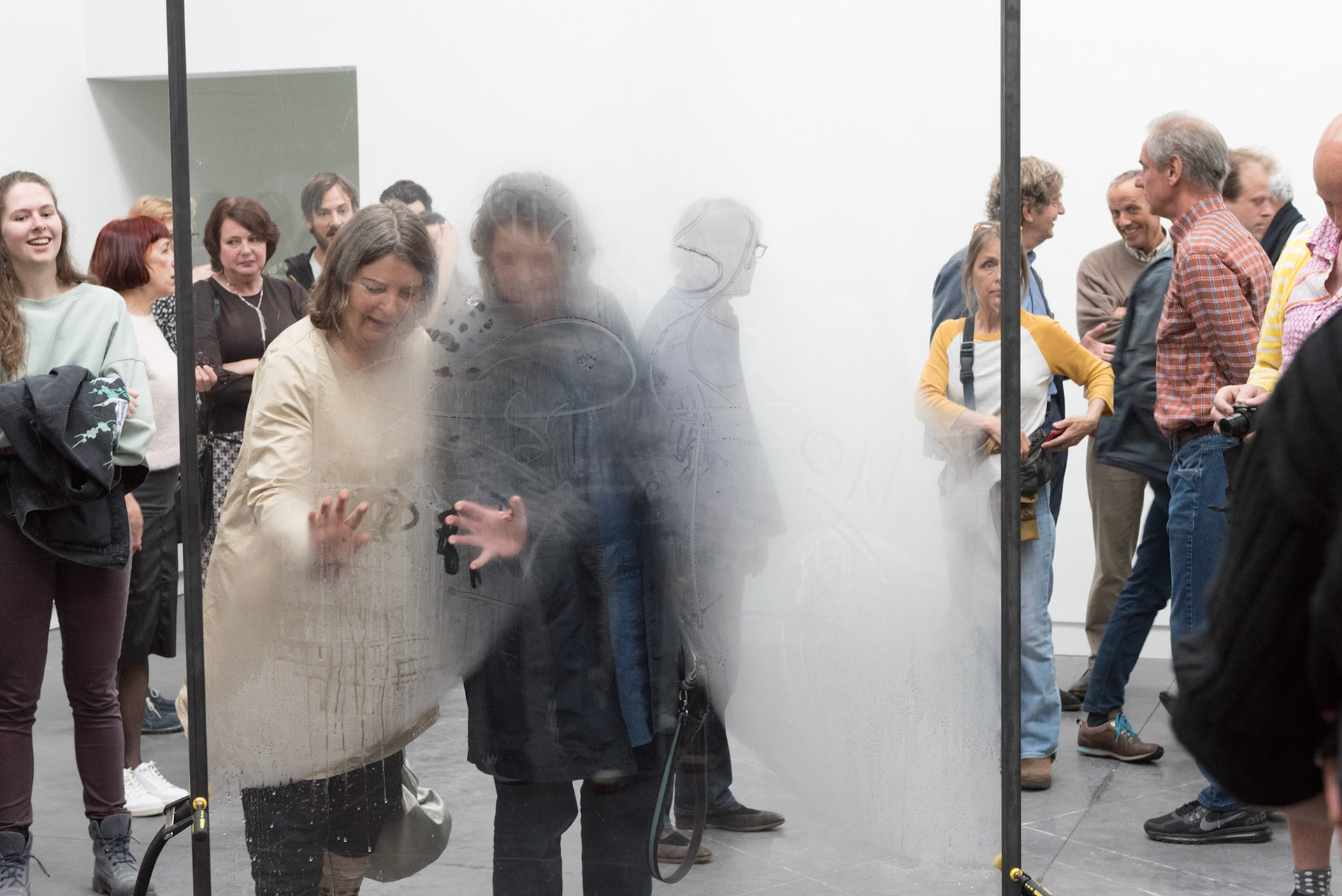

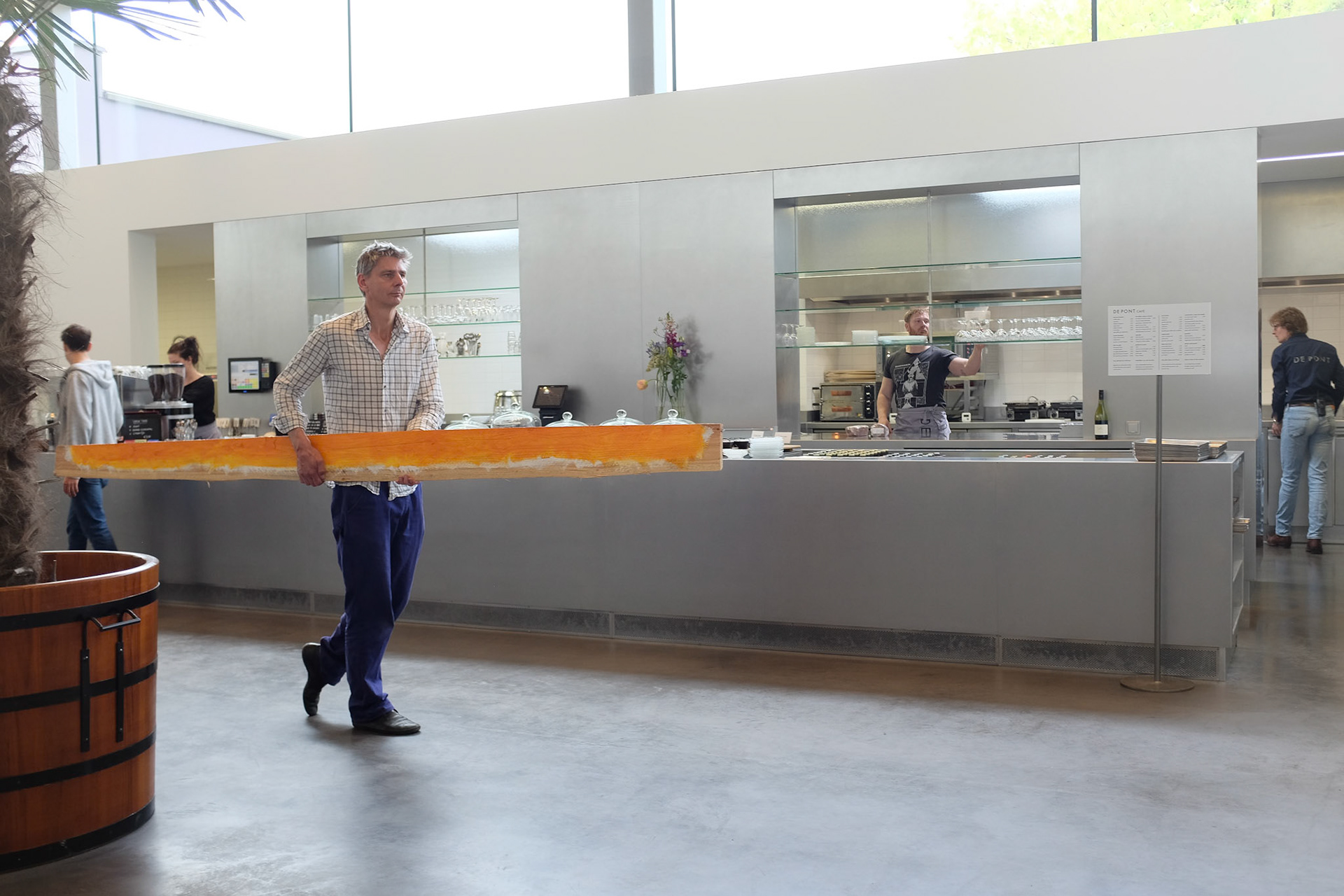
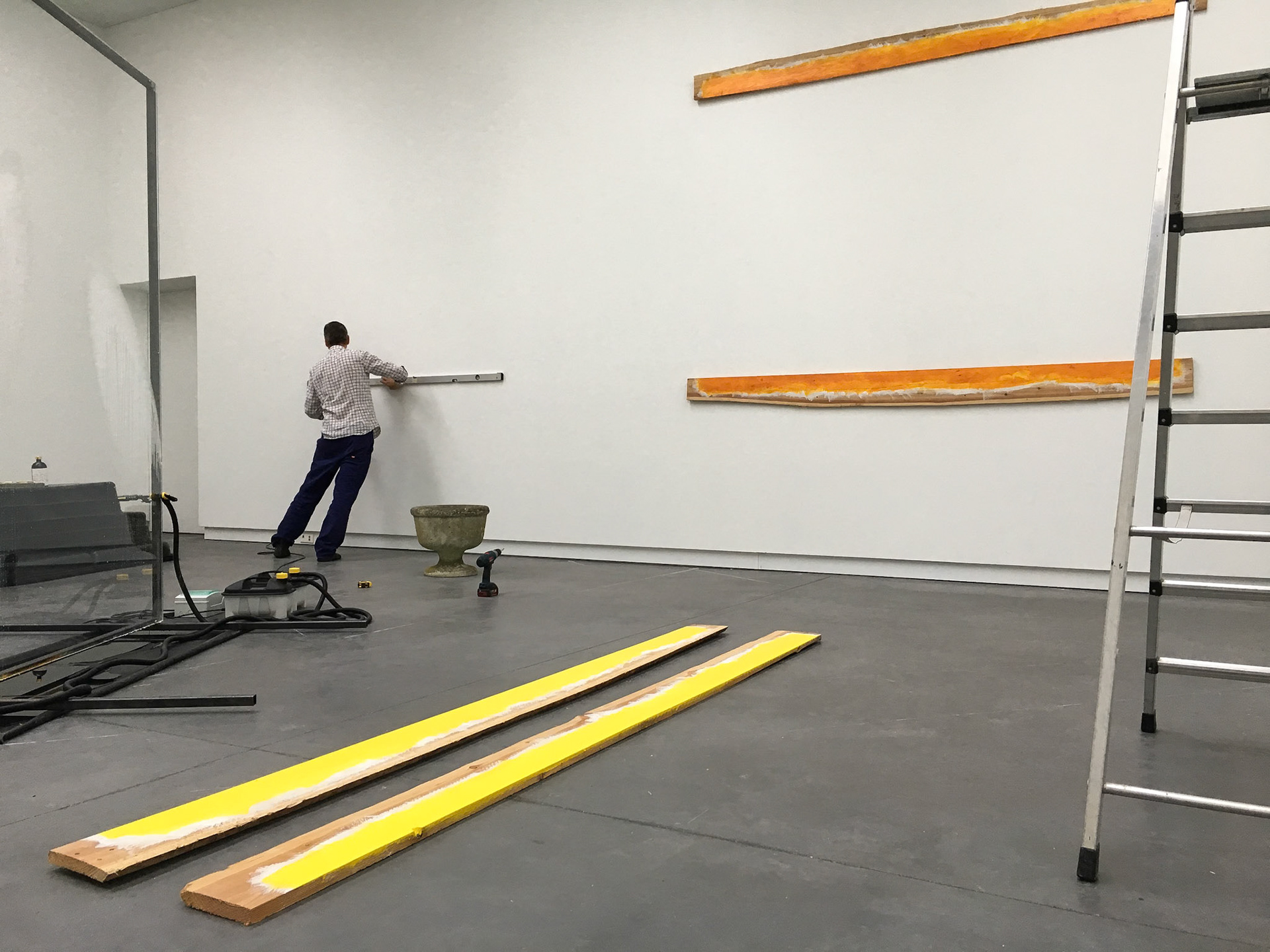
![[#Beginning of Shooting Data Section]Image Size:L (7360 x 4912), FX2017/05/24 10:12:33.38Time Zone and Date:UTC+1, DST:OFFLossless Compressed RAW (14-bit)Artist:Peter Cox Eindhoven NL Copyright:naamsvermelding verplicht Nikon D810Lens:VR 105mm f/2.8GFocal Length:105mmFocus Mode:AF-CAF-Area Mode:AutoVR:OFFAF Fine Tune:OFFAperture:f/10Shutter Speed:2sExposure Mode:ManualExposure Comp.:0EVExposure Tuning:Metering:Center-WeightedISO Sensitivity:ISO 64Device:White Balance:Auto1, 0, 0Color Space:Adobe RGBHigh ISO NR:OFFLong Exposure NR:OFFActive D-Lighting:OFFImage Authentication:Vignette Control:OFFAuto Distortion Control:OFFPicture Control:[NL] NEUTRALBase:[NL] NEUTRALQuick Adjust:-Sharpening:2.00Clarity:0.00Contrast:0.00Brightness:0.00Saturation:0.00Hue:0.00Filter Effects:Toning:Optimize Image:Color Mode:Tone Comp.:Hue Adjustment:Saturation:Sharpening:Latitude:Longitude:Altitude:Altitude Reference:Heading:UTC:Map Datum:[#End of Shooting Data Section]](https://cdn.myportfolio.com/cf59ac0c-8972-46e9-b418-2c4f2edf07d3/8668b5c0-31d8-4a1b-9729-e00d37070e10_rw_1920.jpg?h=13c7b8bb42e7378daadd063e1ebb253c)
[#Beginning of Shooting Data Section]Image Size:L (7360 x 4912), FX2017/05/24 10:12:33.38Time Zone and Date:UTC+1, DST:OFFLossless Compressed RAW (14-bit)Artist:Peter Cox Eindhoven NL Copyright:naamsvermelding verplicht Nikon D810Lens:VR 105mm f/2.8GFocal Length:105mmFocus Mode:AF-CAF-Area Mode:AutoVR:OFFAF Fine Tune:OFFAperture:f/10Shutter Speed:2sExposure Mode:ManualExposure Comp.:0EVExposure Tuning:Metering:Center-WeightedISO Sensitivity:ISO 64Device:White Balance:Auto1, 0, 0Color Space:Adobe RGBHigh ISO NR:OFFLong Exposure NR:OFFActive D-Lighting:OFFImage Authentication:Vignette Control:OFFAuto Distortion Control:OFFPicture Control:[NL] NEUTRALBase:[NL] NEUTRALQuick Adjust:-Sharpening:2.00Clarity:0.00Contrast:0.00Brightness:0.00Saturation:0.00Hue:0.00Filter Effects:Toning:Optimize Image:Color Mode:Tone Comp.:Hue Adjustment:Saturation:Sharpening:Latitude:Longitude:Altitude:Altitude Reference:Heading:UTC:Map Datum:[#End of Shooting Data Section]
![[#Beginning of Shooting Data Section]Image Size:L (7360 x 4912), FX2017/05/24 11:27:36.43Time Zone and Date:UTC+1, DST:OFFLossless Compressed RAW (14-bit)Artist:Peter Cox Eindhoven NL Copyright:naamsvermelding verplicht Nikon D810Lens:45mm f/2.8DFocal Length:45mmFocus Mode:ManualAF-Area Mode:SingleVR:AF Fine Tune:OFFAperture:f/10Shutter Speed:1/8sExposure Mode:Aperture PriorityExposure Comp.:+0.3EVExposure Tuning:Metering:Center-WeightedISO Sensitivity:ISO 64Device:White Balance:Auto1, 0, 0Color Space:Adobe RGBHigh ISO NR:OFFLong Exposure NR:OFFActive D-Lighting:OFFImage Authentication:Vignette Control:OFFAuto Distortion Control:OFFPicture Control:[NL] NEUTRALBase:[NL] NEUTRALQuick Adjust:-Sharpening:2.00Clarity:0.00Contrast:0.00Brightness:0.00Saturation:0.00Hue:0.00Filter Effects:Toning:Optimize Image:Color Mode:Tone Comp.:Hue Adjustment:Saturation:Sharpening:Latitude:Longitude:Altitude:Altitude Reference:Heading:UTC:Map Datum:[#End of Shooting Data Section]](https://cdn.myportfolio.com/cf59ac0c-8972-46e9-b418-2c4f2edf07d3/0df212ad-2dca-42fe-8473-ba60adc9741f_rw_1920.jpg?h=7b52aaa6560881834c11df8555ef13b2)
[#Beginning of Shooting Data Section]Image Size:L (7360 x 4912), FX2017/05/24 11:27:36.43Time Zone and Date:UTC+1, DST:OFFLossless Compressed RAW (14-bit)Artist:Peter Cox Eindhoven NL Copyright:naamsvermelding verplicht Nikon D810Lens:45mm f/2.8DFocal Length:45mmFocus Mode:ManualAF-Area Mode:SingleVR:AF Fine Tune:OFFAperture:f/10Shutter Speed:1/8sExposure Mode:Aperture PriorityExposure Comp.:+0.3EVExposure Tuning:Metering:Center-WeightedISO Sensitivity:ISO 64Device:White Balance:Auto1, 0, 0Color Space:Adobe RGBHigh ISO NR:OFFLong Exposure NR:OFFActive D-Lighting:OFFImage Authentication:Vignette Control:OFFAuto Distortion Control:OFFPicture Control:[NL] NEUTRALBase:[NL] NEUTRALQuick Adjust:-Sharpening:2.00Clarity:0.00Contrast:0.00Brightness:0.00Saturation:0.00Hue:0.00Filter Effects:Toning:Optimize Image:Color Mode:Tone Comp.:Hue Adjustment:Saturation:Sharpening:Latitude:Longitude:Altitude:Altitude Reference:Heading:UTC:Map Datum:[#End of Shooting Data Section]
![[#Beginning of Shooting Data Section]Image Size:L (7360 x 4912), FX2017/05/24 11:30:30.33Time Zone and Date:UTC+1, DST:OFFLossless Compressed RAW (14-bit)Artist:Peter Cox Eindhoven NL Copyright:naamsvermelding verplicht Nikon D810Lens:45mm f/2.8DFocal Length:45mmFocus Mode:ManualAF-Area Mode:SingleVR:AF Fine Tune:OFFAperture:f/10Shutter Speed:1/4sExposure Mode:Aperture PriorityExposure Comp.:+0.3EVExposure Tuning:Metering:Center-WeightedISO Sensitivity:ISO 64Device:White Balance:Auto1, 0, 0Color Space:Adobe RGBHigh ISO NR:OFFLong Exposure NR:OFFActive D-Lighting:OFFImage Authentication:Vignette Control:OFFAuto Distortion Control:OFFPicture Control:[NL] NEUTRALBase:[NL] NEUTRALQuick Adjust:-Sharpening:2.00Clarity:0.00Contrast:0.00Brightness:0.00Saturation:0.00Hue:0.00Filter Effects:Toning:Optimize Image:Color Mode:Tone Comp.:Hue Adjustment:Saturation:Sharpening:Latitude:Longitude:Altitude:Altitude Reference:Heading:UTC:Map Datum:[#End of Shooting Data Section]](https://cdn.myportfolio.com/cf59ac0c-8972-46e9-b418-2c4f2edf07d3/c8a462eb-4779-4077-99ea-b6450053ccc3_rw_1920.jpg?h=f94271af70b5e585d1994d2ddf441d95)
[#Beginning of Shooting Data Section]Image Size:L (7360 x 4912), FX2017/05/24 11:30:30.33Time Zone and Date:UTC+1, DST:OFFLossless Compressed RAW (14-bit)Artist:Peter Cox Eindhoven NL Copyright:naamsvermelding verplicht Nikon D810Lens:45mm f/2.8DFocal Length:45mmFocus Mode:ManualAF-Area Mode:SingleVR:AF Fine Tune:OFFAperture:f/10Shutter Speed:1/4sExposure Mode:Aperture PriorityExposure Comp.:+0.3EVExposure Tuning:Metering:Center-WeightedISO Sensitivity:ISO 64Device:White Balance:Auto1, 0, 0Color Space:Adobe RGBHigh ISO NR:OFFLong Exposure NR:OFFActive D-Lighting:OFFImage Authentication:Vignette Control:OFFAuto Distortion Control:OFFPicture Control:[NL] NEUTRALBase:[NL] NEUTRALQuick Adjust:-Sharpening:2.00Clarity:0.00Contrast:0.00Brightness:0.00Saturation:0.00Hue:0.00Filter Effects:Toning:Optimize Image:Color Mode:Tone Comp.:Hue Adjustment:Saturation:Sharpening:Latitude:Longitude:Altitude:Altitude Reference:Heading:UTC:Map Datum:[#End of Shooting Data Section]
![[#Beginning of Shooting Data Section]Image Size:L (7360 x 4912), FX2017/05/24 11:33:57.48Time Zone and Date:UTC+1, DST:OFFLossless Compressed RAW (14-bit)Artist:Peter Cox Eindhoven NL Copyright:naamsvermelding verplicht Nikon D810Lens:45mm f/2.8DFocal Length:45mmFocus Mode:ManualAF-Area Mode:SingleVR:AF Fine Tune:OFFAperture:f/10Shutter Speed:1/4sExposure Mode:Aperture PriorityExposure Comp.:+0.3EVExposure Tuning:Metering:Center-WeightedISO Sensitivity:ISO 64Device:White Balance:Auto1, 0, 0Color Space:Adobe RGBHigh ISO NR:OFFLong Exposure NR:OFFActive D-Lighting:OFFImage Authentication:Vignette Control:OFFAuto Distortion Control:OFFPicture Control:[NL] NEUTRALBase:[NL] NEUTRALQuick Adjust:-Sharpening:2.00Clarity:0.00Contrast:0.00Brightness:0.00Saturation:0.00Hue:0.00Filter Effects:Toning:Optimize Image:Color Mode:Tone Comp.:Hue Adjustment:Saturation:Sharpening:Latitude:Longitude:Altitude:Altitude Reference:Heading:UTC:Map Datum:[#End of Shooting Data Section]](https://cdn.myportfolio.com/cf59ac0c-8972-46e9-b418-2c4f2edf07d3/d614513b-608b-4aef-932d-22ad33d0cdff_rw_1920.jpg?h=d7654dabc4659654eae6ddca478a7987)
[#Beginning of Shooting Data Section]Image Size:L (7360 x 4912), FX2017/05/24 11:33:57.48Time Zone and Date:UTC+1, DST:OFFLossless Compressed RAW (14-bit)Artist:Peter Cox Eindhoven NL Copyright:naamsvermelding verplicht Nikon D810Lens:45mm f/2.8DFocal Length:45mmFocus Mode:ManualAF-Area Mode:SingleVR:AF Fine Tune:OFFAperture:f/10Shutter Speed:1/4sExposure Mode:Aperture PriorityExposure Comp.:+0.3EVExposure Tuning:Metering:Center-WeightedISO Sensitivity:ISO 64Device:White Balance:Auto1, 0, 0Color Space:Adobe RGBHigh ISO NR:OFFLong Exposure NR:OFFActive D-Lighting:OFFImage Authentication:Vignette Control:OFFAuto Distortion Control:OFFPicture Control:[NL] NEUTRALBase:[NL] NEUTRALQuick Adjust:-Sharpening:2.00Clarity:0.00Contrast:0.00Brightness:0.00Saturation:0.00Hue:0.00Filter Effects:Toning:Optimize Image:Color Mode:Tone Comp.:Hue Adjustment:Saturation:Sharpening:Latitude:Longitude:Altitude:Altitude Reference:Heading:UTC:Map Datum:[#End of Shooting Data Section]
![[#Beginning of Shooting Data Section]Image Size:L (7360 x 4912), FX2017/05/24 11:37:18.23Time Zone and Date:UTC+1, DST:OFFLossless Compressed RAW (14-bit)Artist:Peter Cox Eindhoven NL Copyright:naamsvermelding verplicht Nikon D810Lens:45mm f/2.8DFocal Length:45mmFocus Mode:ManualAF-Area Mode:SingleVR:AF Fine Tune:OFFAperture:f/10Shutter Speed:1/4sExposure Mode:Aperture PriorityExposure Comp.:+0.3EVExposure Tuning:Metering:Center-WeightedISO Sensitivity:ISO 64Device:White Balance:Auto1, 0, 0Color Space:Adobe RGBHigh ISO NR:OFFLong Exposure NR:OFFActive D-Lighting:OFFImage Authentication:Vignette Control:OFFAuto Distortion Control:OFFPicture Control:[NL] NEUTRALBase:[NL] NEUTRALQuick Adjust:-Sharpening:2.00Clarity:0.00Contrast:0.00Brightness:0.00Saturation:0.00Hue:0.00Filter Effects:Toning:Optimize Image:Color Mode:Tone Comp.:Hue Adjustment:Saturation:Sharpening:Latitude:Longitude:Altitude:Altitude Reference:Heading:UTC:Map Datum:[#End of Shooting Data Section]](https://cdn.myportfolio.com/cf59ac0c-8972-46e9-b418-2c4f2edf07d3/9a3ad05e-0a64-4cc7-82e4-234b7bd805f0_rw_1920.jpg?h=22816f91d573ae50b854f80ed62c46b4)
[#Beginning of Shooting Data Section]Image Size:L (7360 x 4912), FX2017/05/24 11:37:18.23Time Zone and Date:UTC+1, DST:OFFLossless Compressed RAW (14-bit)Artist:Peter Cox Eindhoven NL Copyright:naamsvermelding verplicht Nikon D810Lens:45mm f/2.8DFocal Length:45mmFocus Mode:ManualAF-Area Mode:SingleVR:AF Fine Tune:OFFAperture:f/10Shutter Speed:1/4sExposure Mode:Aperture PriorityExposure Comp.:+0.3EVExposure Tuning:Metering:Center-WeightedISO Sensitivity:ISO 64Device:White Balance:Auto1, 0, 0Color Space:Adobe RGBHigh ISO NR:OFFLong Exposure NR:OFFActive D-Lighting:OFFImage Authentication:Vignette Control:OFFAuto Distortion Control:OFFPicture Control:[NL] NEUTRALBase:[NL] NEUTRALQuick Adjust:-Sharpening:2.00Clarity:0.00Contrast:0.00Brightness:0.00Saturation:0.00Hue:0.00Filter Effects:Toning:Optimize Image:Color Mode:Tone Comp.:Hue Adjustment:Saturation:Sharpening:Latitude:Longitude:Altitude:Altitude Reference:Heading:UTC:Map Datum:[#End of Shooting Data Section]
![[#Beginning of Shooting Data Section]Image Size:L (7360 x 4912), FX2017/05/24 11:59:07.99Time Zone and Date:UTC+1, DST:OFFLossless Compressed RAW (14-bit)Artist:Peter Cox Eindhoven NL Copyright:naamsvermelding verplicht Nikon D810Lens:45mm f/2.8DFocal Length:45mmFocus Mode:ManualAF-Area Mode:SingleVR:AF Fine Tune:OFFAperture:f/10Shutter Speed:1/5sExposure Mode:Aperture PriorityExposure Comp.:+0.7EVExposure Tuning:Metering:Center-WeightedISO Sensitivity:ISO 64Device:White Balance:Auto1, 0, 0Color Space:Adobe RGBHigh ISO NR:OFFLong Exposure NR:OFFActive D-Lighting:OFFImage Authentication:Vignette Control:OFFAuto Distortion Control:OFFPicture Control:[NL] NEUTRALBase:[NL] NEUTRALQuick Adjust:-Sharpening:2.00Clarity:0.00Contrast:0.00Brightness:0.00Saturation:0.00Hue:0.00Filter Effects:Toning:Optimize Image:Color Mode:Tone Comp.:Hue Adjustment:Saturation:Sharpening:Latitude:Longitude:Altitude:Altitude Reference:Heading:UTC:Map Datum:[#End of Shooting Data Section]](https://cdn.myportfolio.com/cf59ac0c-8972-46e9-b418-2c4f2edf07d3/d9ee127e-5b20-4d77-946f-1325bc26988c_rw_1920.jpg?h=f81d464d305238801f78284774b56ac0)
[#Beginning of Shooting Data Section]Image Size:L (7360 x 4912), FX2017/05/24 11:59:07.99Time Zone and Date:UTC+1, DST:OFFLossless Compressed RAW (14-bit)Artist:Peter Cox Eindhoven NL Copyright:naamsvermelding verplicht Nikon D810Lens:45mm f/2.8DFocal Length:45mmFocus Mode:ManualAF-Area Mode:SingleVR:AF Fine Tune:OFFAperture:f/10Shutter Speed:1/5sExposure Mode:Aperture PriorityExposure Comp.:+0.7EVExposure Tuning:Metering:Center-WeightedISO Sensitivity:ISO 64Device:White Balance:Auto1, 0, 0Color Space:Adobe RGBHigh ISO NR:OFFLong Exposure NR:OFFActive D-Lighting:OFFImage Authentication:Vignette Control:OFFAuto Distortion Control:OFFPicture Control:[NL] NEUTRALBase:[NL] NEUTRALQuick Adjust:-Sharpening:2.00Clarity:0.00Contrast:0.00Brightness:0.00Saturation:0.00Hue:0.00Filter Effects:Toning:Optimize Image:Color Mode:Tone Comp.:Hue Adjustment:Saturation:Sharpening:Latitude:Longitude:Altitude:Altitude Reference:Heading:UTC:Map Datum:[#End of Shooting Data Section]
![[#Beginning of Shooting Data Section]Image Size:L (7360 x 4912), FX2017/05/24 12:01:47.88Time Zone and Date:UTC+1, DST:OFFLossless Compressed RAW (14-bit)Artist:Peter Cox Eindhoven NL Copyright:naamsvermelding verplicht Nikon D810Lens:45mm f/2.8DFocal Length:45mmFocus Mode:ManualAF-Area Mode:SingleVR:AF Fine Tune:OFFAperture:f/10Shutter Speed:1/4sExposure Mode:Aperture PriorityExposure Comp.:+0.7EVExposure Tuning:Metering:Center-WeightedISO Sensitivity:ISO 64Device:White Balance:Auto1, 0, 0Color Space:Adobe RGBHigh ISO NR:OFFLong Exposure NR:OFFActive D-Lighting:OFFImage Authentication:Vignette Control:OFFAuto Distortion Control:OFFPicture Control:[NL] NEUTRALBase:[NL] NEUTRALQuick Adjust:-Sharpening:2.00Clarity:0.00Contrast:0.00Brightness:0.00Saturation:0.00Hue:0.00Filter Effects:Toning:Optimize Image:Color Mode:Tone Comp.:Hue Adjustment:Saturation:Sharpening:Latitude:Longitude:Altitude:Altitude Reference:Heading:UTC:Map Datum:[#End of Shooting Data Section]](https://cdn.myportfolio.com/cf59ac0c-8972-46e9-b418-2c4f2edf07d3/85a4e749-2a3e-4ff3-a6e4-962687ec6ca0_rw_1920.jpg?h=ffcf67986cefb3f78312fbbe21f967f6)
[#Beginning of Shooting Data Section]Image Size:L (7360 x 4912), FX2017/05/24 12:01:47.88Time Zone and Date:UTC+1, DST:OFFLossless Compressed RAW (14-bit)Artist:Peter Cox Eindhoven NL Copyright:naamsvermelding verplicht Nikon D810Lens:45mm f/2.8DFocal Length:45mmFocus Mode:ManualAF-Area Mode:SingleVR:AF Fine Tune:OFFAperture:f/10Shutter Speed:1/4sExposure Mode:Aperture PriorityExposure Comp.:+0.7EVExposure Tuning:Metering:Center-WeightedISO Sensitivity:ISO 64Device:White Balance:Auto1, 0, 0Color Space:Adobe RGBHigh ISO NR:OFFLong Exposure NR:OFFActive D-Lighting:OFFImage Authentication:Vignette Control:OFFAuto Distortion Control:OFFPicture Control:[NL] NEUTRALBase:[NL] NEUTRALQuick Adjust:-Sharpening:2.00Clarity:0.00Contrast:0.00Brightness:0.00Saturation:0.00Hue:0.00Filter Effects:Toning:Optimize Image:Color Mode:Tone Comp.:Hue Adjustment:Saturation:Sharpening:Latitude:Longitude:Altitude:Altitude Reference:Heading:UTC:Map Datum:[#End of Shooting Data Section]
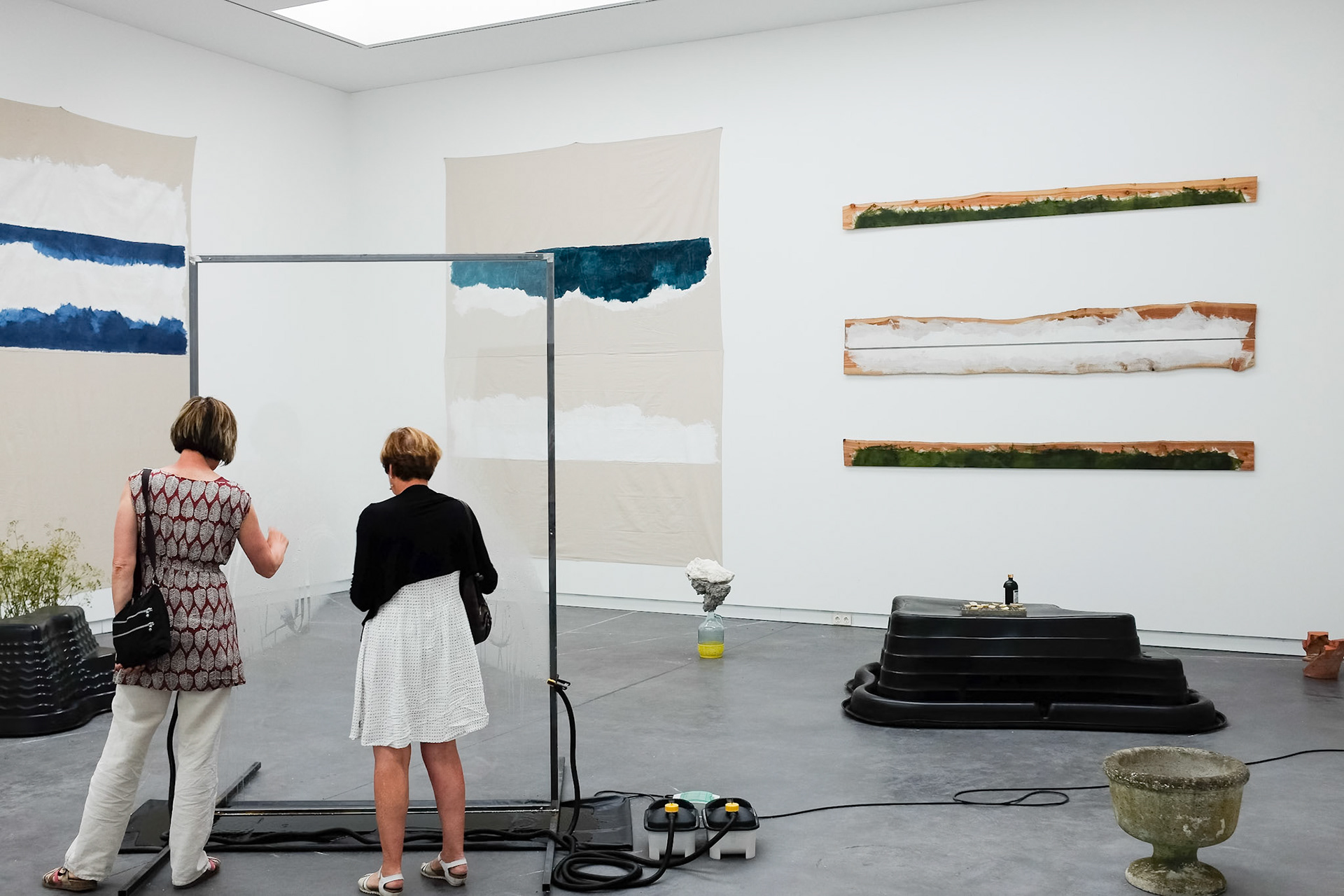

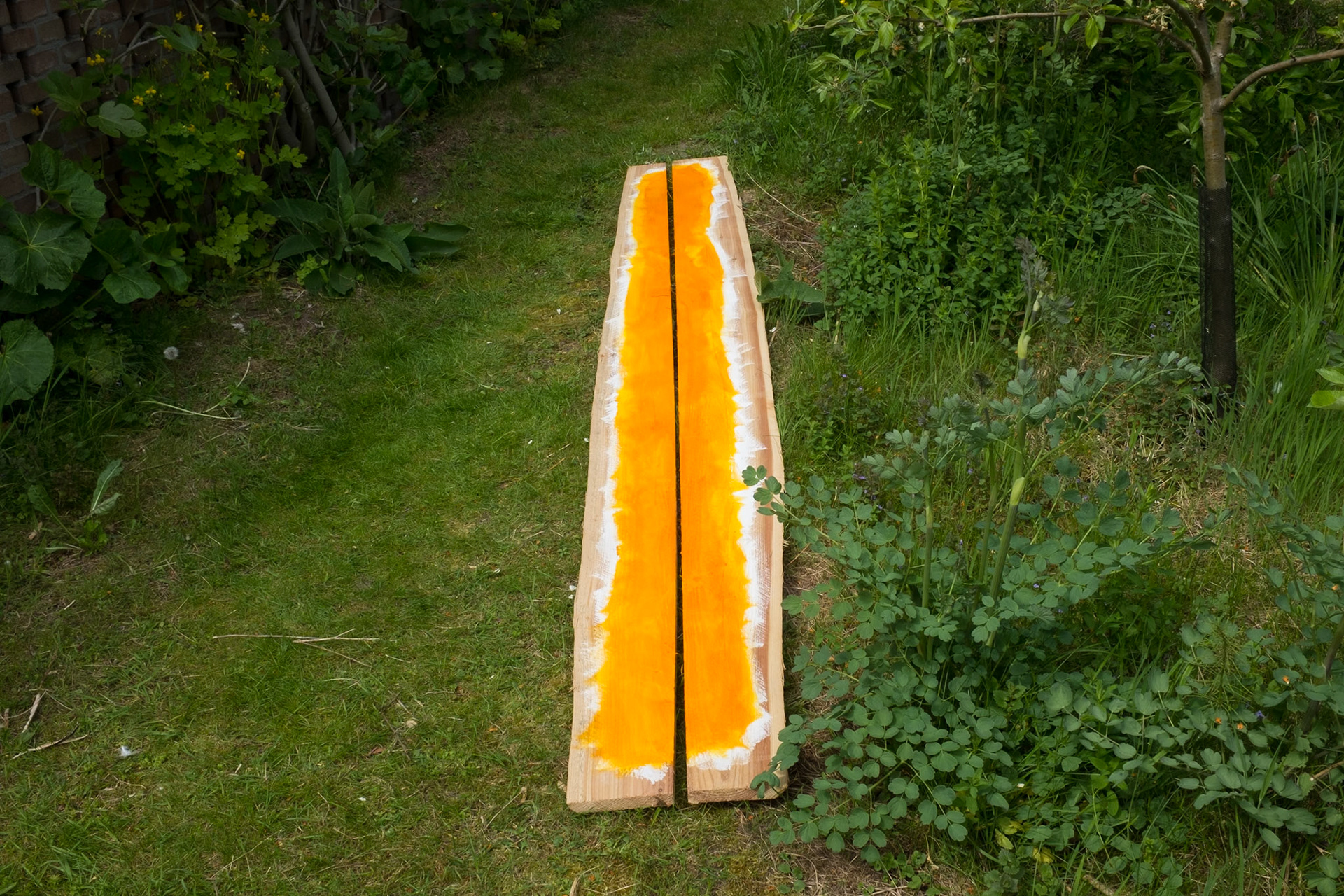

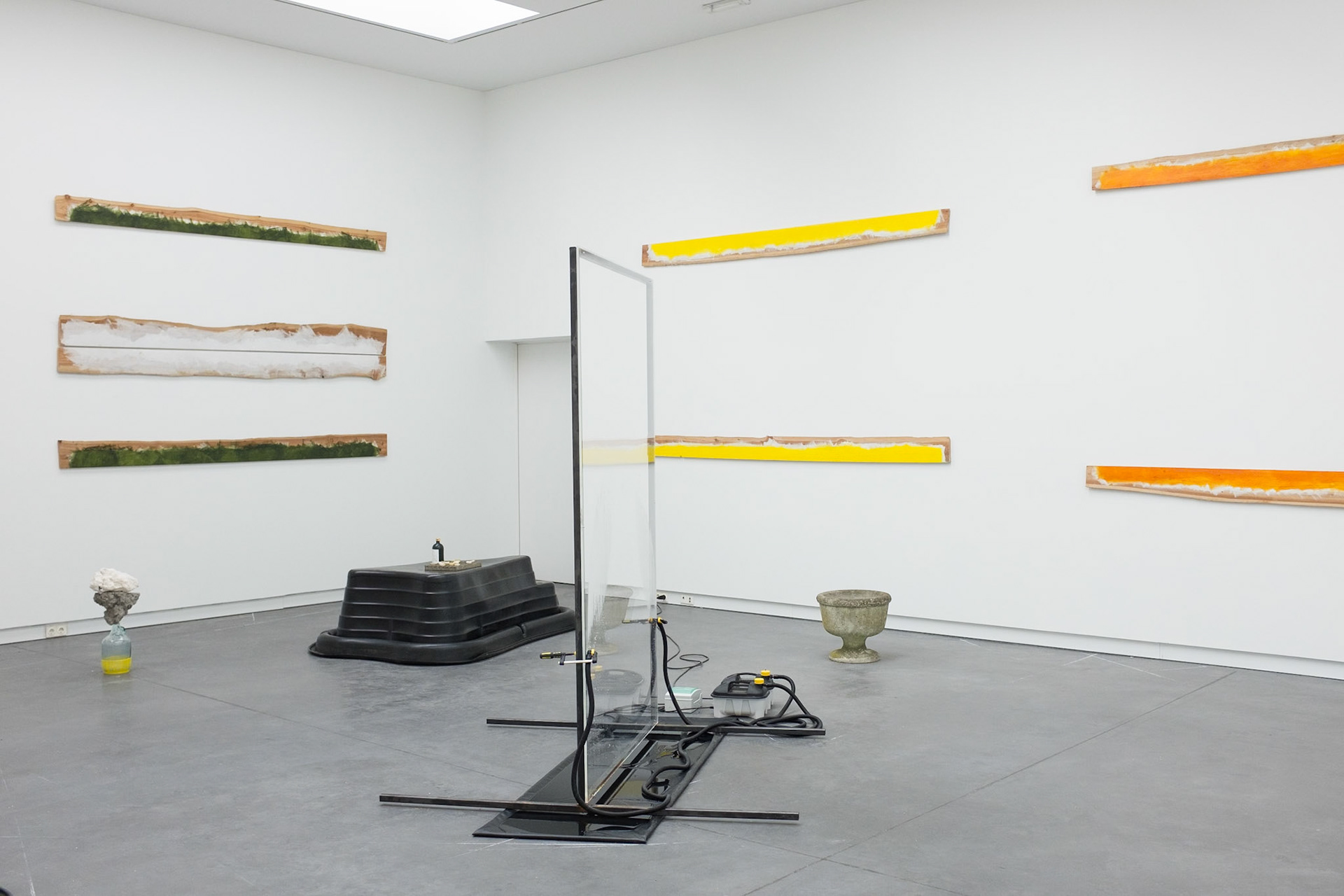
Doorenweerd & Doorenweerd, the holy spirit, de Pont museum, Tilburg (nl)
Duo show together with my son Mischa Doorenweerd
Doorenweerd & Doorenweerd
In 1993 Jeroen Doorenweerd (Terneuzen, 1962) was the first artist to be asked by De Pont to give shape to the museum's garden with a work. His son Mischa (Tilburg, 1988), then five years old, played on the duckboards, flights of steps and look-out posts that he had placed in the garden. Now father and son are exhibiting jointly, as artists of equal standing, in the podium space.
After his installation in De Pont's garden, Jeroen produced a great deal of work for the public domain. This has frequently had an architectonic character. But for several years now he has been painting again. In that work, he is concerned with his intense presence in the moment, with being overwhelmed by the energy contained in the act of painting. For the project Zinging Tangerine (2014) he and Koen Delaere turned Middelburg's Vleeshal into one big studio that visitors could explore. Of course, painting was done here, but food was also prepared and eaten; films were shown, yoga lessons held; and there were workshops in swordsmanship and oyster hunting. The whole gamut of pleasure in life had been inextricably bound up with the painted canvases from that period. In Mischa's work there is always movement and life, be it that of plants, wind or fire. His installations involve the use of diverse materials: found or created objects, video, sculptures and texts. About his work he says: "I imagine myself walking around in the world, while things fall from my sides."
In 2014 he produced Crackling tail to golden wave, comprised of sculptures and fireworks, for Tilburg's Incubate festival. With Cold drinks (2013) visitors were able to grab a bottle of soft drink from a fridge and place the empty bottle on a tray. Gradually this gave rise to a playful composition, as visitors would respond to each other by stacking them or creating patterns. In each work he creates a very distinct atmosphere, and the visitor becomes a participant. While his work does come across as being very diverse, its fundamental tone, characterized by a touch of absurdism, remains recognizable throughout. The Old Man and the Sea, Ernest Hemingway's story about an old fisherman who catches a fish as big as his boat, tells of the trial of strength between the man, the sea and the fish. The tale is highly idiosyncratic and specific, but precisely because of that it expresses a universal experience. A few years ago, Jeroen gave this book to his son as a gift, and while preparing the exhibition they both read it once again. Both of them recognize, in their approaches, a certain intensity of sensory perception that is inherent in Hemingway's way of describing the fisherman's every move. In Mischa's work that intensity is heightened by its frequently temporary character. Our gaze is tilted for a moment, the senses are put on edge, and our awareness of the surroundings is broadened and deepened. For Jeroen, the strong sensory impressions that he has while painting determine the character of his works. As an extension of Zinging Tangerine, Jeroen made a journey to California with Koen Delaere during the summer of 2016. There, on a beach, he spread out large canvases and painted on site, next to the surfers and waves. Mischa and Jeroen give expression, each in his own way, to an infatuation with life. Inevitable forces of influence and extrication are played out between father and son. The friction and the differences of insight have found their way into the exhibition. Both artists emphatically avoid the search for a consensus, but allow instead the full range of their work to be seen. Existing similarities and arising contrasts become apparent, after all, without any intervention on their part. The Holy Spirit is the third force in a trinity, the energy released when work by the father and the son is brought together in a single space.
The works of Jeroen Doorenweerd in the exhibition were realized with financial support of the Mondriaan Fund.
After his installation in De Pont's garden, Jeroen produced a great deal of work for the public domain. This has frequently had an architectonic character. But for several years now he has been painting again. In that work, he is concerned with his intense presence in the moment, with being overwhelmed by the energy contained in the act of painting. For the project Zinging Tangerine (2014) he and Koen Delaere turned Middelburg's Vleeshal into one big studio that visitors could explore. Of course, painting was done here, but food was also prepared and eaten; films were shown, yoga lessons held; and there were workshops in swordsmanship and oyster hunting. The whole gamut of pleasure in life had been inextricably bound up with the painted canvases from that period. In Mischa's work there is always movement and life, be it that of plants, wind or fire. His installations involve the use of diverse materials: found or created objects, video, sculptures and texts. About his work he says: "I imagine myself walking around in the world, while things fall from my sides."
In 2014 he produced Crackling tail to golden wave, comprised of sculptures and fireworks, for Tilburg's Incubate festival. With Cold drinks (2013) visitors were able to grab a bottle of soft drink from a fridge and place the empty bottle on a tray. Gradually this gave rise to a playful composition, as visitors would respond to each other by stacking them or creating patterns. In each work he creates a very distinct atmosphere, and the visitor becomes a participant. While his work does come across as being very diverse, its fundamental tone, characterized by a touch of absurdism, remains recognizable throughout. The Old Man and the Sea, Ernest Hemingway's story about an old fisherman who catches a fish as big as his boat, tells of the trial of strength between the man, the sea and the fish. The tale is highly idiosyncratic and specific, but precisely because of that it expresses a universal experience. A few years ago, Jeroen gave this book to his son as a gift, and while preparing the exhibition they both read it once again. Both of them recognize, in their approaches, a certain intensity of sensory perception that is inherent in Hemingway's way of describing the fisherman's every move. In Mischa's work that intensity is heightened by its frequently temporary character. Our gaze is tilted for a moment, the senses are put on edge, and our awareness of the surroundings is broadened and deepened. For Jeroen, the strong sensory impressions that he has while painting determine the character of his works. As an extension of Zinging Tangerine, Jeroen made a journey to California with Koen Delaere during the summer of 2016. There, on a beach, he spread out large canvases and painted on site, next to the surfers and waves. Mischa and Jeroen give expression, each in his own way, to an infatuation with life. Inevitable forces of influence and extrication are played out between father and son. The friction and the differences of insight have found their way into the exhibition. Both artists emphatically avoid the search for a consensus, but allow instead the full range of their work to be seen. Existing similarities and arising contrasts become apparent, after all, without any intervention on their part. The Holy Spirit is the third force in a trinity, the energy released when work by the father and the son is brought together in a single space.
The works of Jeroen Doorenweerd in the exhibition were realized with financial support of the Mondriaan Fund.